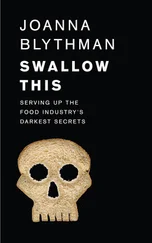We are tired, the children are crotchety and we need to get on with some essential tasks, so we switch on the television to give us some breathing space. But as we buy ourselves some peace and relative quiet we may, without knowing it, be storing up problems when it comes to getting our children to eat a decent, wholesome diet.
We may begin to find that, even from the youngest age, when we try to give them water the children start demanding a sweetened fizzy drink. No matter how tempting the contents of our fruit bowl, we may see them gravitating towards the biscuit tin or demanding money to visit the sweet shop. We find ourselves wondering why they won’t eat anything made with fish, unless it’s coated in crispy crumb or formed into a special marine ‘shape’. When we buy the more traditional, unsticky breakfast cereals, we find them campaigning for the latest brand that’s stuck together with sugar and other sweet ingredients. Where do these demands come from?
Before you subscribe to the prevalent attitude that all children just naturally and spontaneously want to eat junk, consider first the pressure that emanates from that flickering screen. We need look no further than the diet of food ads served up on children’s prime-time television, which consists of little more than what some researchers call ‘an onslaught of junk-food hype’.
In 1996 the independent watchdog, Consumers International, surveyed the type of food advertising during peak children’s television hours in thirteen countries: eleven in Europe plus the USA and Australia. In the UK it found that children see seventeen adverts each hour and ten of these are for food or drink – the highest number of food and drink ads in any European country.
A massive 95 per cent of these ads were for unhealthy foods, high in fat, sugar or salt. Top of the food ad pops in the UK came confectionery, with breakfast cereals following a close second. By comparison, ads for foods that most people would agree should be encouraged, such as fruit and vegetables, were almost non-existent. The only remotely healthy ads that British children are likely to see on television are for frozen peas.
Consumers International’s survey confirms the findings of another carried out in 1995 by the National Food Alliance. This also concluded that advertising during programmes appealing to children presented a grossly unbalanced nutritional message with fatty and sugary foods predominating.
This imbalance matters particularly because children are less able than adults to understand the intent of advertising or its persuasive techniques and are therefore less able to treat it with scepticism. The younger the child, the more vulnerable she or he is to swallowing an advertising message uncritically. A 1996 UK government report reiterated what other researchers have found – that children have difficulty distinguishing television advertisements from the programmes surrounding them. At the most television-dependent age of three to four, when it is a boon to plonk down your offspring in front of the television while you get on with other things, it is unlikely that they can differentiate between the two. It is now thought that it is only after the age of ten to twelve that children realise that the purpose of advertisements is to persuade you to buy things. This confusion is compounded by the use of characters or personalities popular with children which appear to endorse the product in the child’s eyes. Whether it’s cuddly, collectable free gifts with characters from the latest cartoon blockbuster or a cute little familiar face on that pot of fromage frais, such images exploit children’s gullibility.
Obviously advertising isn’t the only message that influences what children eat. The advertising industry says that its critics ignore the role of families and education in helping children make healthy choices. When that familiar ‘Can we buy that?’ plea follows the ad, the advertising industry expects us to take the time to explain patiently to our children how that sticky cereal or fatty snack isn’t very healthy unless it’s part of a ‘balanced diet’. And surely public health campaigns and education at school should be pointing the nation’s youth along the right path too?
But there is a lot of research to suggest that television advertising is the single most important factor influencing what children eat. In the US researchers have found that even when allowing for factors such as sex, reading level, ethnic background, parents’ occupation and educational level, television viewing correlated with bad eating habits and faulty understanding of the principles of nutrition.
In Sweden and Norway the pressure has been taken off parents because no advertisements at all are allowed during children’s programmes. In Denmark and Finland sponsorship of children’s television isn’t allowed either.
In the UK, however, there are no such restrictions on advertising directed at children. So unless parents try actively to correct distorted perceptions, the junk-food message from television ads will constantly undermine our effort to get our children to eat well.
How can we react to this? There’s always the off switch, of course, but it takes a resolute spirit to keep children away from the box. More realistically, we need to recognise that children will pick up a junk-food message when watching television and that if we do nothing we are simply letting that process run its course.
On the other hand, we can decide that we are going to combat it with counter-propaganda for a wider and more wholesome range of food consistent with the real-food approach outlined in pages 55–60. This involves instilling cynicism about the taste, quality and long-term effects of eating junk and a certain determination that we aren’t going to give in to the predictable demands generated by advertising.
If you want some effective strategies for doing this, turn to Getting the Message Across on pages 61–6 and The Fun and Skill of Food Shopping on pages 221–4. For ideas about how to deal with pestering demands for junk directly, see Sweets, Treats and Bans on pages 91–5.
Having difficulty getting your child to eat? Never fear, the processed food industry’s marketing team is here to help. It has devised some super products, designed to be snapped up by the nation’s kiddies and make shopping easy for poor old driven-to-distraction ‘Mum’. Lest she should miss these on her desperate dash round the supermarket, many chains now have helpful signs such as ‘Children’s Desserts’ on those prominent end-of-aisle locations to make them stand out.
Not that these tailor-made products for kids are easy to ignore, either for ‘Mum’ or for her arm-tugging companions. They sing out with brightly coloured images of jolly cartoon characters or the latest collectable toy. And because these familiar images intrigue children – after all they see them over and over again on children’s TV – trying to take a toddler or small child past them without being put under pressure to buy is about as easy as convincing them to walk past a playpark without going in.
The packaging that the images adorn is a triumph of technical wizardry. Anything straightforward is out – after all, we all know that kids have to be bribed into eating food, don’t we? So packaging takes over and generates an endless stream of novelties designed to capture that gullible junior market.
The straightforward old yogurt pot, for example, is out. Now yogurt must come in rigid two-compartment plastic containers with a dinky-doo addition to mix in. Anything goes, from multi-coloured sprinkles to chocolate polka dots or crunchy mini-biscuits – with the caveat that it must be sweet.
Читать дальше











